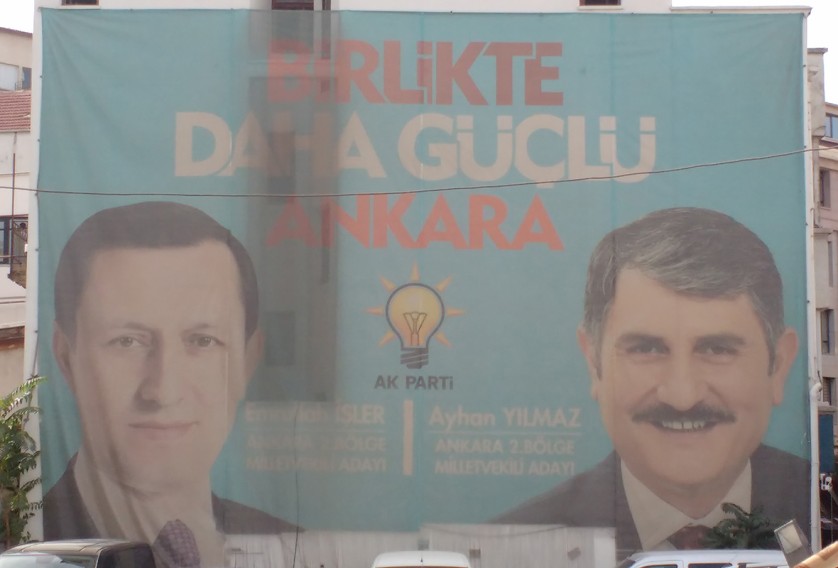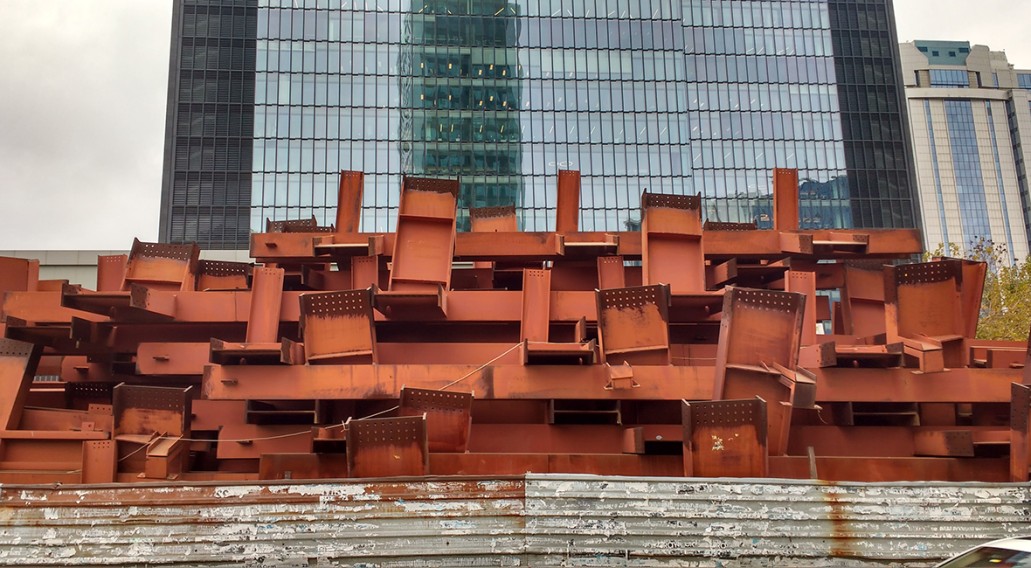Pirmin Hagen
Istanbul is, of course, a very impressive city – both with regard to its dimensions and the diversity of the individual parts of the city. Thus, I spent much time outside the studio and explored the city. At the moment, I was interested in geographical structures, settlement patterns and historical Islamic buildings and that roughly was what guided my explorations.
In addition, there was a lot of culture to be seen – old and new, the Biennial and archaeology.
Apart from my discovery tours in the city, but also outside the studio, I spent a few hours in the library of SALT Galata that has an extensive collection of literature on the arts and culture, but also numerous publications specific to this cultural area. The fact that there is a drolly working-class neighbourhood and a fish market with restaurant in the immediate vicinity does not do any harm to the intellectual way of life either.
And then at the studio in Chihangir, I drew a bit. After all, the rooms there are ideal for that purpose and you should also take advantage of that.
So much for work. But food is something that is always important in Istanbul – you simply must sample and try it.
In addition to the city, I also visited a few other parts of the country, such as the capital that has been planned and built by the republic’s founding fathers, among others, with the help of Austrian architects, and, in contrast, Konya, a religious, conservative centre dating from pre-Ottoman times.
And, as I do not want to disappoint the readers of these lines, I am going to write a few words about my experiences with the political situation in Turkey, even though I have to start by admitting that I only caught a glimpse of it. The political problems are well known, but in everyday life you do not feel a constant threat. There are a lot of controls, a lot of police officers, more than previously (I believe), a lot more than in Austria. What the people say is that many are concerned about the re-organisation of the education system and the pressure exerted on opposition groups. However, people do not remain silent about the developments. Quite on the contrary. Interestingly, Austria’s political developments are seen with concern in Turkey, also beyond Erdogan’s polemics. By the way, when he rose to the top of politics some decades ago, he also was a kind of young hopeful and a symbol against the outmoded, rigid political structures of the previous times.
But that does not really help now, Istanbul and Turkey are definitely an exciting place to be – very interesting and instructive, very enjoyable.
| 1. | My stay in one word: |
| Terrific | |
| 2. | Things I miss since I am no longer there: |
| Food, chaos | |
| 3. | Dos & don’ts in this place: |
| You are free to do everything you want anyway, but in any event you should enjoy the good food. Public provocations that hurt religious feelings (e.g. ridiculing Atatürk, etc.) may be less advisable. | |
| 4. | Where you can buy great supplies: |
| That depends on your work, of course. In Karaköy, you can get everything for crafts, especially for boat building, but also diverse tools, bags of pigments and all kinds of screws… If you just want a drawing pad, there is a small, tucked-away kirtasiye (Özen Kirtasiye) on the street to Taksim (Siraselviler Caddesi). | |
| 5. | What you should definitely bring with you from home: |
| good shoes | |
| 6. | On art at my residency location: |
| it exists | |
| 7. | Around the studio – this is where I go shopping, drink a coffee and get the best lunch specials within walking distance: |
| For example, shopping in nearby supermarkets; for people looking for organic food, there is a market in Kurtulus on Saturdays; Turkish coffee in one of the tea rooms, sour espresso in one of the third wave cafés; lunch either at Özkonak (uphill) or Deniz (downhill) | |
| 8. | Where I like to spend the evening (dinner, drinks and best sound): |
| Urban, Cihangir Merdiven, Ispanak… | |
| 9. | What I would have liked to know about the studio already at the start of my residency: |
| Nothing, but what I believe you should know is that SALT Galata has an excellent library and that admission is free almost everywhere when you show the artist ID (in case of doubt, point to the UNESCO address) |
Website resident: pirminhagen.com




